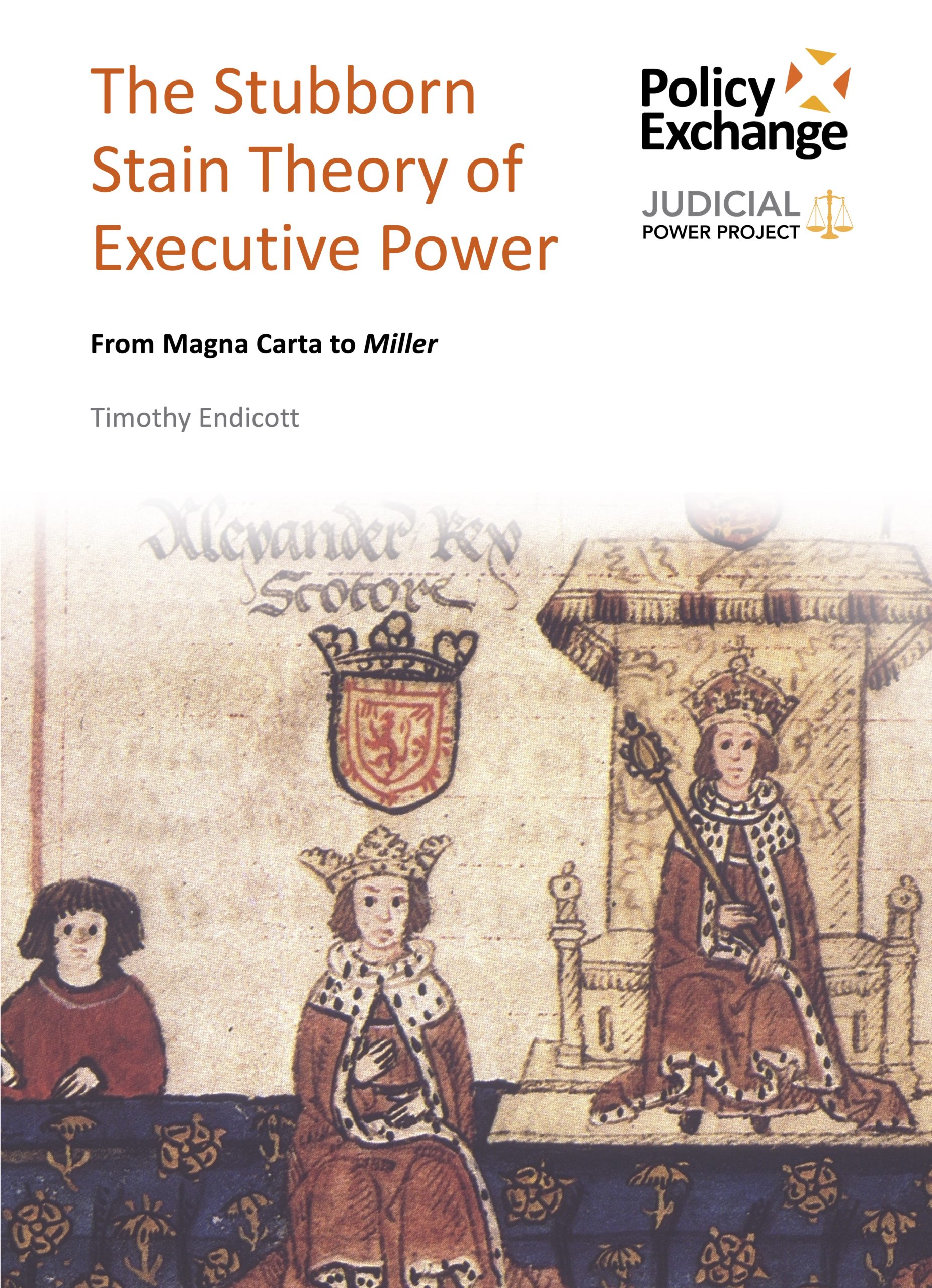
The Stubborn Stain Theory of Executive Power
In November 2016, days before the Supreme Court hearing in the Miller case, Professor Timothy Endicott (University of Oxford) delivered a lecture for Policy Exchange’s Judicial Power Project on the royal prerogative. Reflecting its weight and importance, the lecture was relied on by the Government’s lawyers: Professor Endicott was the second authority cited in oral argument, the first being Blackstone. Today, the Judicial Power Project publishes a revised and updated version of Professor Endicott’s lecture, with a foreword by Professor Sir Ross Cranston, recently retired from the High Court bench and former Solicitor General.
The paper notes the attraction of the argument that prevailed in the Supreme Court in Miller, namely that the royal prerogative could not lawfully be used to commence the United Kingdom’s withdrawal from the European Union. The attraction lies in the view that prerogative power –the constitutional power of the executive– is ‘a stubborn stain’ that has been partly but not entirely washed out of our constitution. However, Professor Endicott argues against the stubborn stain theory. There are positive reasons of constitutional principle for an efficient, unified and democratic executive. In the British tradition from Magna Carta to Miller, executive power has gradually been transferred from the monarch to Parliament, and from the monarch to the judges. The tradition seems to support the idea that executive power is generally bad. But we can only understand the extent of the executive power –and the ways in which it ought to be limited and constrained– if we understand its constitutional value. In particular, we need to understand its value in making the United Kingdom a community, capable of acting as a legal person in international relations.

